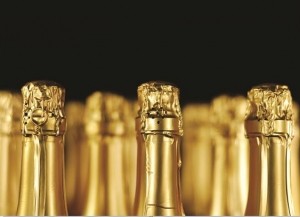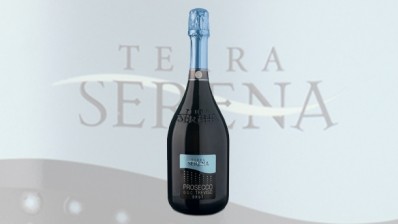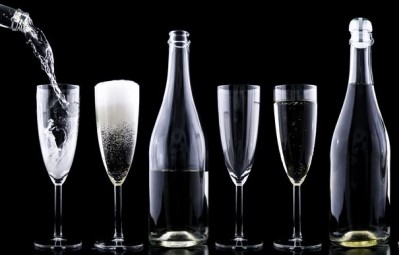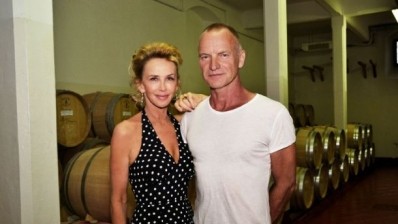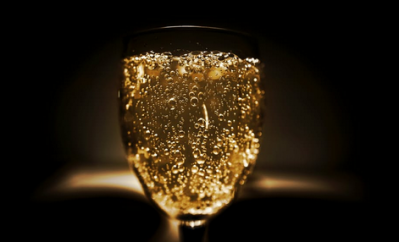Champagne and sparkling wine
Is Champagne too fancy for pubs?
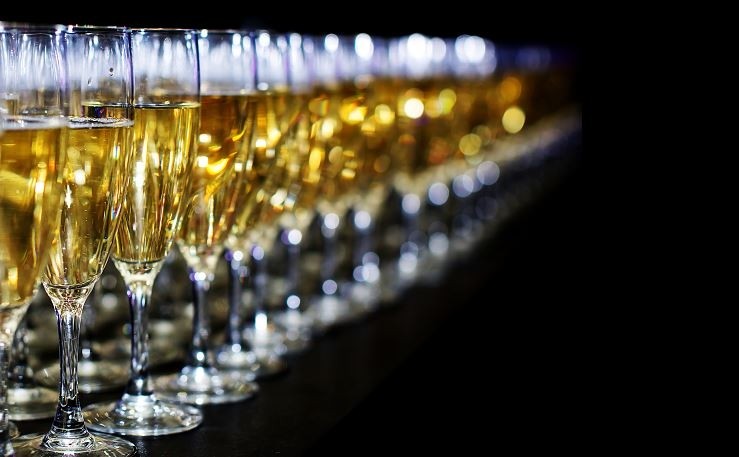
Whatever the woes of the world, certain good news stories have a habit of coming round as regular as clockwork. Weddings, birthdays, anniversaries, Christmas, you name it, there’s no better way to celebrate them than with a bottle of bubbly.
That role has traditionally been assigned to Champagne, but the glorious diversity of the UK’s wine market means that consumers can now indulge during big occasions with a decent bottle of fizz from virtually any corner of the world – and some of the best sparkling wines are being made by producers right on their doorstep.
And it’s no longer reserved for special occasions, with groups of friends enjoying a bottle or two through the evening when the only thing being celebrated is the night out itself. A You Gov poll for the Wine & Spirit Association conducted in April showed that 17% of consumers had drunk sparkling wine in a bar in the previous four weeks.
On-trade consumers drank 40% more bottles of non-Champagne fizz in the year to 9 July, with value sales up 29% to £377m. RTDs seem to have been one of the big losers, with value sales down 12% over the same period, slipping below those of fizz.
Sales of cheaper sparkling wines have eroded Champagne’s market share, with its volumes dropping 11% over the year, though the value of sales did see a slight uplift of 2%. Champagne’s higher bottle prices means its value sales still eclipse those of all its sparkling wine rivals at £427m.
For on-trade operators it seems that having a budget non-Champagne sparkling offer has become an imperative, with that category’s average on-trade price slipping by 8% to £33.37 per litre.
At the same time, it appears that consumers are prepared to pay a bit more when splashing out for what some would see as “the real thing”, with an average Champagne price per litre of £87.66, a rise of 15%, suggesting that more expensive marks are getting some pull through.
Gary Keller, senior buying manager at Molson Coors, says: “Interestingly, what we’re seeing is that the quality of sparkling wine is rising, and with it consumer expectations are increasing.
“That said, price will always be a key factor in deciding what to drink, so offering high-quality products at a competitive price is important.”
Matt Towe, marketing manager at Vivas, the specialist drinks division of Bidvest, says pubs need to judge their own customer base carefully when deciding what to stock.
“Gastropubs should be supplying high-end, indulgent varieties of Champagne, while modest watering holes should focus on Cava and Prosecco, which are generally more purse-friendly,” he says.
The company supplies the Tosti Prosecco collection in white and rosé varieties and has just introduced Dimora, which Towe says is “perfect for the food-led pub market”.
Bestway Wholesale’s Tony Holmes notes that “the UK’s love affair with Prosecco shows no signs of slowing down”. The wholesaler supplies the Royal Prosecco brand.
‘By the glass and bottle’
“Prosecco is a must stock and we recommend offering it by both the glass and the bottle,” adds Holmes.
Michael Hardy, managing director of Ooberstock, says it will be expanding its Prosecco range in 2017 but argues that “for most outlets Prosecco is still predominantly a bar-call, so one Prosecco would be enough”.
Italy dominates the sparkling wine market, accounting for 56% of all fizz imports from other EU countries in 2015 [Wine & Spirit Trade Association].
But there have been signs in the trade at least – if not among the mass market of consumers – that “peak Prosecco” may be drawing near, with wine writers and some suppliers talking up the merits of other Italian regions.
The Franciacorta region in Lombardy, in the north of the country, makes sparkling wines from the same grapes used in the production of Champagne – Chardonnay, Pinot Noir and Pinot Meunier – and is a hot tip, though UK distribution remains limited.
Nick Tatham MW, wine development director at Italian specialist CWF, says pubs should aim to have two styles of Prosecco – “either DOC and DOCG, or Extra Dry and Brut, or a house Prosecco and a premium Prosecco – but adds that “the on-trade should widen the range of Proseccos available to include different styles and qualities but also experiment with alternative Italian sparkling wines”.
He adds: “This is the most exciting country for sparkling wines at present and there is a wide range of wines at all price points.”
Tatham also advocates jazzing up the offering with pink Prosecco of which it lists several, including Casa Gheller Brut Rose and Cuvée Heritage Brut Rose from Neirano.
Prosecco is certainly where all the commercial excitement is in sparkling wine at the bottom, but plenty of other countries and regions offer good quality, value alternatives that can make the right pub’s offering stand out from the crowd.
Tatham says: “Other than Italy, go back to France where there are many fantastic wines such as Saumur, Cremant, Blanquette de Limoux, Vouvray and Clairette de Die, for example.”
The New World also offers some great options on sparkling wine. Simon Thorpe MW, managing director at importer Neogicants UK, points to sparklers from Australia and New Zealand, countries in which it specialises.
“We are lucky to have both Jansz from Tasmania, one of Australia’s finest sparkling wine brands, and Nautilus Cuvee from Marlborough, again regarded as being at the very top end of New Zealand sparkling wine quality,” he says.
The wines are made from the traditional Champagne grapes in the type of cooler climate conditions that the famous French region also enjoys.
‘Fantastic value’
“Of late, it seems that these wines are being cherished in the premium on-trade because of their authenticity and quality,” says Thorpe. “It’s perhaps no surprise that they are made from Chardonnay and Pinot Noir vineyards in cool climates. They represent fantastic value and a distinctive alternative to the more mainstream options.”
But arguably the sparkling wine country that has been gaining the most critical acclaim in recent times is much closer to home: England.
Producers in southern England enjoy a similar climate to Champagne and benefit from the same type of chalky soil, and English sparkling wines have beaten top Champagnes in various blind taste tests to justify similar luxury prices.
The area in England under vine has doubled in the past 10 years and is on course to expand by a further 50% by 2020. Wine list consultant Jade Koch has listed English wines at modern Italian restaurants Padella and Trullo in London, in both instances the only non-Italian wines to feature.
“You used to find yourself having to explain why you had an English wine on the list, now you’re more likely to need to explain why you don’t,” she says.
John Calton is chef-patron of the Staith House, a Star Pubs & Bars outlet in North Shields, and was named Gastropub Chef of the Year in the Top 50 Gastropubs this year.
He has championed English sparkling wines. “They give a lot of the top Champagnes a run for their money,” he says. “We list sparkling wines from Hambledon, Nyetimber and Bolney.
“When people want something to celebrate with they go to Champagne but we say why don’t you try something more complex and bit more interesting. When you tell them that it’s the same climate and the same soil, people like to hear that story.”
Calton lists Champagnes from Gosset and Laurent-Perrier too, including by-the-glass on Friday and Saturday nights, but says full bottle prices for his English fizzes are more favourable for comparable wines.
English sparkling has been the focus for events at the pub. “We had Nyetimber down here and had 50-odd people in for a tasting,” he says. “It went down a storm.”
With so much excitement in other areas it would be easy to lose sight of the important role of Champagne as a celebratory drink.
Matthew Clark’s wine development specialist Michele Cartwright, says outlets should aim for a small progression in price points to trade customers up through the range.
“Offer different styles of Champagne and include a known rosé, and look at extra brut to sweeter styles,” she says. “Price your entry level Champagne competitively to encourage upsell.
And Cartwright says advice is on hand to help pubs sell more. “All the Grand Marque houses are super supportive at helping you grow sales if you engage,” she says. “We work on setting targets together to grow the category which include training specifically on Champagne, setting team incentives and trips to the region.”
Adding to the experience:
Sparkling wine can bring more to the party than just bubbles. The ceremony of opening, pouring and keeping the bottle in an ice bucket on the table creates a sense of occasion that’s lacking in other drinks.
Nick Tatham at CWF says pubs can enhance the experience by using special glassware for sparkling wine service.
“For special occasions try magnums which add glamour and fun to the party and save time in opening bottles,” he adds.
Tony Holmes at Bestway says: “Operators can also link food and wine for promotions such as Bubbles & a Board – sharing boards with a bottle of Prosecco.”
Another way to give sparkling wine an extra dimension is to feature fizz cocktails.
Pernod Ricard has been working on a Mumm Champagne-based drink with flavoured tea specialist Bubbleology.
On-trade channel director Ian Peart says the serve takes inspiration from the Bellini, a mix of sparkling wine and peach purée.
“The Bubblelini is an interesting serve that lends itself to a social sharing,” says Peart.
Matt Towe at Bidvest advocates stocking syrups and liqueurs to make Kir Royales, Bellinis, Rossinis and Mimosas.
“Serving them with fresh fruit and in specialist flutes is perfect for Christmas parties and a great way to tap into the Champagne and sparkling wine trend.”
He also suggests by-the-glass to give customers flexibility and lower price points, and offering tasters of sparkling wines.
“This isn’t about aimlessly giving away free product,” he says, “but a tool to engage consumers in conversation and build trust.”


